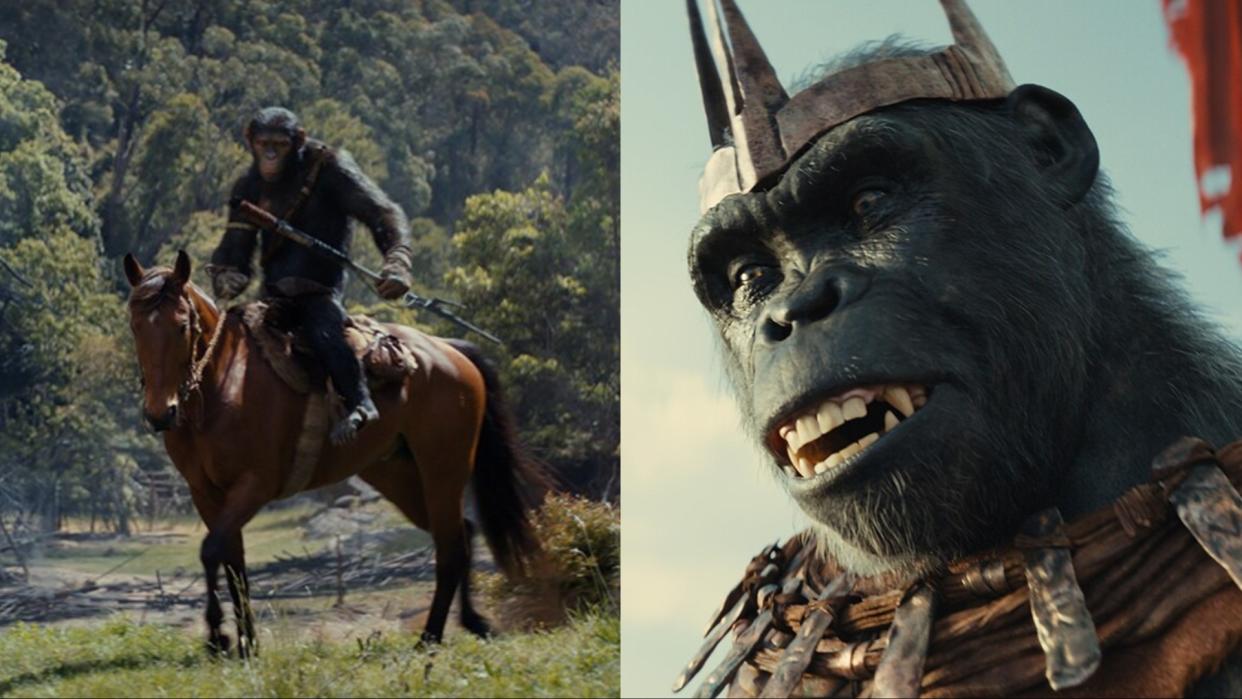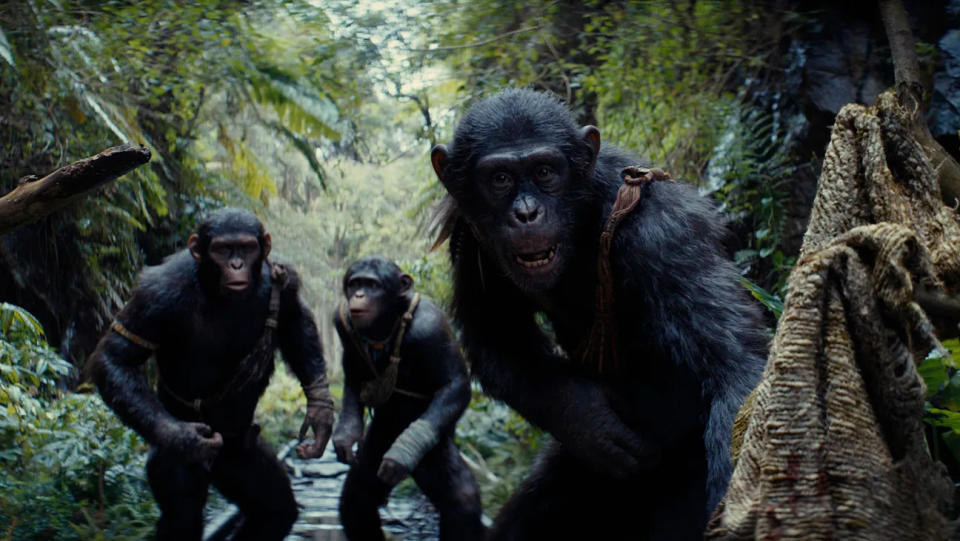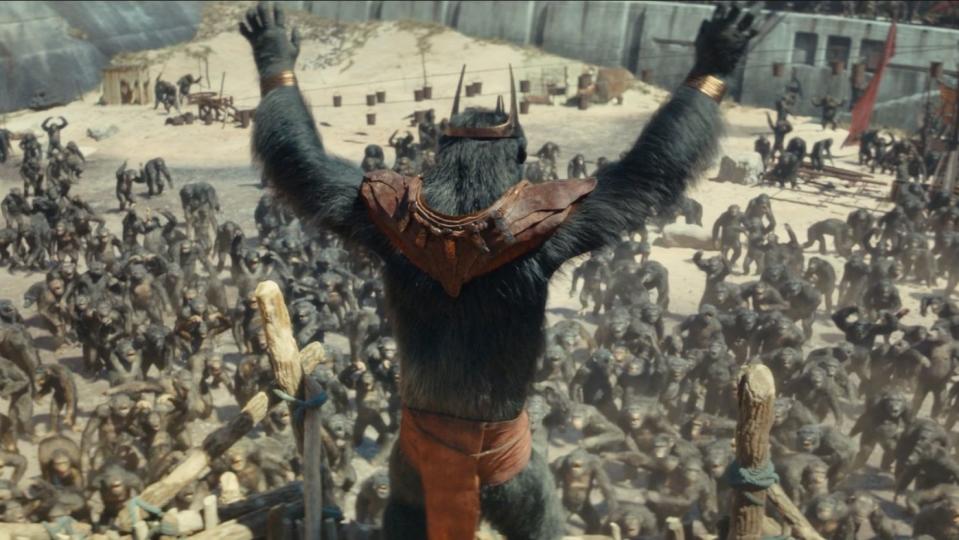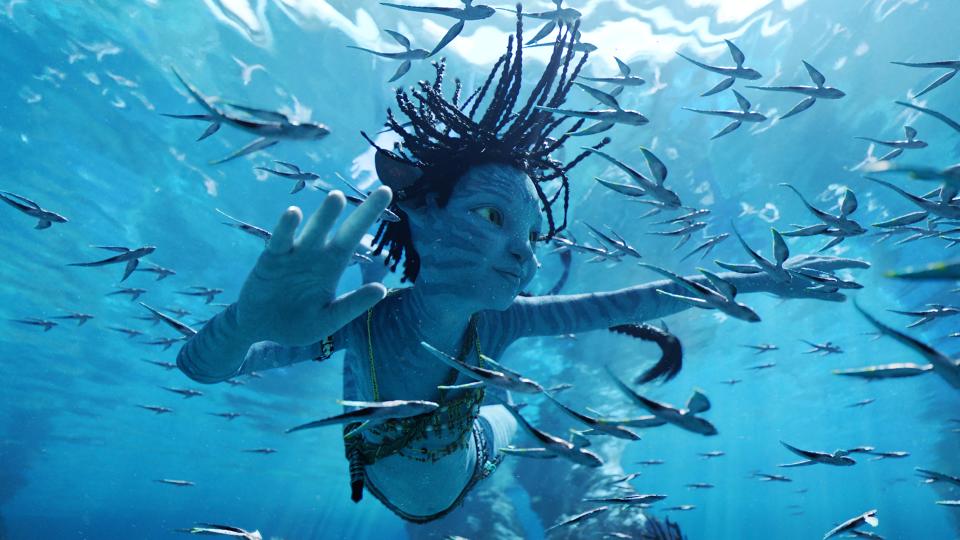‘We shot the movie twice’: director Wes Ball reveals why Kingdom of the Planet of the Apes was so difficult to film

- Oops!Something went wrong.Please try again later.
Not all computer-generated imagery (CGI) is created equal. For every decades-in-the-making Avatar: The Way of Water, there are numerous Marvel TV shows whose respective visual effects (VFX) artists are stretched to the limit like Mister Fantastic. The latest addition to the ever-expanding Planet of the Apes canon, Kingdom of the Planet of the Apes, sits in the former camp, though the new film's director, Wes Ball, admits that shooting a movie about apes without any actual apes was a similarly grueling endeavor.
“The technical aspect of this movie was more difficult than anything I’ve done before,” Ball tells TechRadar. “You're not really ever shooting the movie; you're just shooting parts of the movie that you hope will come together months later [and] that you hope will work on top of each other. Also, shooting on set is really difficult. You’re racing the sunlight, things don’t quite work. I’m getting 10 set-ups a day instead of my usual 30, because the process is so slow. It was a wild experience.”
Ball is best known for directing The Maze Runner trilogy – which isn't exactly devoid of CGI – but Kingdom’s make-or-break reliance on post-production wizardry proved a whole different ball game for the filmmaker. “There are about 30 or 40 minutes in Kingdom that are a full, 100% CG”, Ball explains, “which is closer to the Avatar mode of doing things. That stuff was the most difficult [to shoot], because there was nothing I could build. We had to go out onto the mo-cap stage, and the actors are pretending like it’s all there – we’re all trying to see it together – and then after the fact, we had to painfully figure out how to make it all feel real.

“But that’s the magic trick!” the director continues, having clearly relished the challenge of a new filmmaking style. “How do we blend in what’s real with what’s not real? It forces us as camera people to make real choices. Sometimes, we shoot in real locations and completely replace everything. But we’re there, starting from a place that feels real.”
Kingdom, one of the most anticipated new movies of 2024, also marked a step up for Ball in terms of the sheer quantity of shots he needed to capture: “We shot the movie twice – once with actors, and once with no actors. That's [called] the ‘Clean Plate’ technique. But with that comes a lot of power and flexibility – you can use different takes and different shots together in ways you just can’t in a traditional live-action movie.”
Welcome to the 60s

Despite the film’s leap forward in time and clear reliance on state-of-the-art mo-cap technology, Ball used 60-year-old Panavision C-Series lenses to achieve a certain vintage aesthetic in Kingdom of the Planet of the Apes.
“We didn’t want to go back to Vancouver to shoot, where the previous three movies went,” the director explains. "Although it has this beautiful, overcast light, it’s a dark and brooding look. We wanted to go out into the light. Kingdom is a new beginning. It’s a new day for these apes who are entering the next chapter of their existence. We wanted ugly, harsh sunlight.
“We used these old sixties Panavision C-Series lenses [to achieve that light], and we actually used the T-series, too – which is a more modern anamorphic lens – as the movie becomes more modern in terms of its story. The lenses change, but they’re all anamorphic, which was different for me, because I’m used to shooting with spherical lenses.
"Most people won’t understand what that means, but anamorphic movies are the movies I grew up on – the look of movies that I’m used to from the 1960s. It’s a different mode of shooting. It’s got shape and depth to it. The cameras aren’t quite as active, but we had the confidence to be still and marvel at the work that Wētā FX [the film’s VFX company] did.”
As for why Ball opted to mix old and new filmmaking techniques, the director is keen to stress that it’s all a matter of personal preference: “It’s not even like anamorphic lenses are better – this was just a choice. An aesthetic. The lenses are a little bit blurrier, everything looks a little dirtier. It’s a purely subjective thing."
Learning from the best

Before we wrap up, Ball tips his hat to James Cameron, Peter Jackson, and Wētā for walking so he and other filmmakers could run.
“Ultimately, I don't think we could have made this movie five years ago,” he explains. “With the amount of advancements that Wētā has made through James Cameron pushing them into new frontiers, just the fact that they figured this stuff out – and proved it could work – in the Avatar movies [was a big help]. Even The Lord of the Rings [was influential]. We got to leverage all of that experience and wisdom and craft. Wētā, in general, has been responsible for some of the biggest shifts and gains in the VFX world. It’s just amazing.”
Kingdom of the Planet of the Apes is now playing in theaters worldwide. It'll arrive on Disney Plus at an unannounced date.

